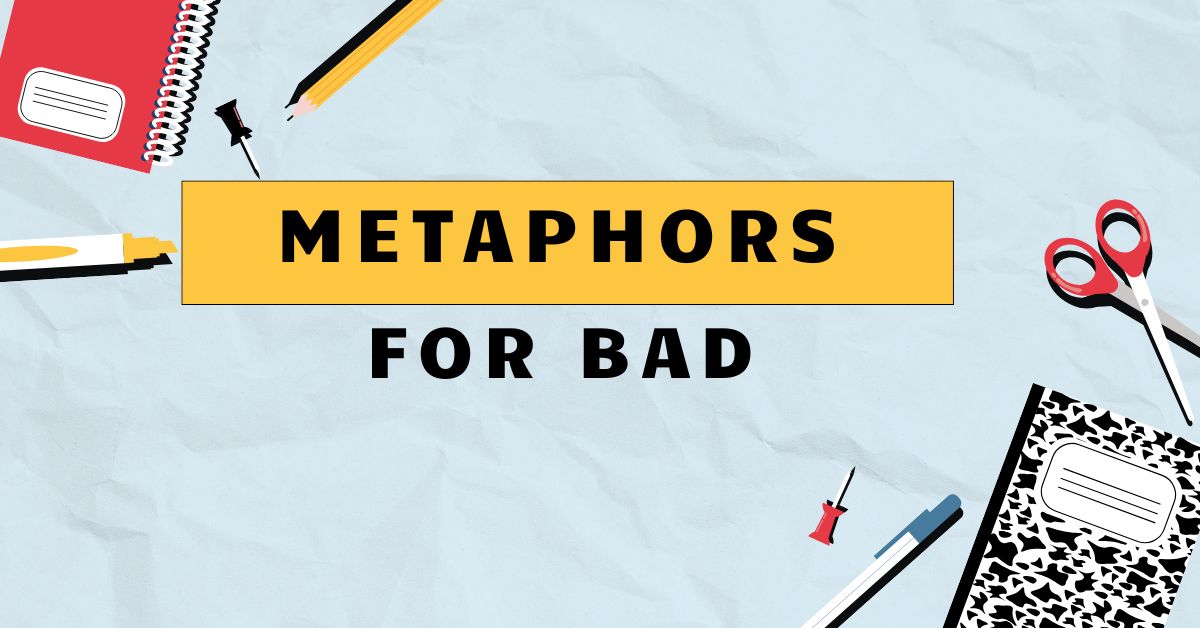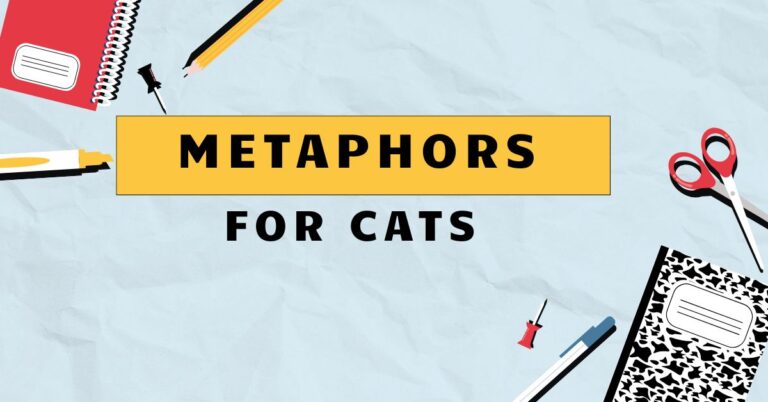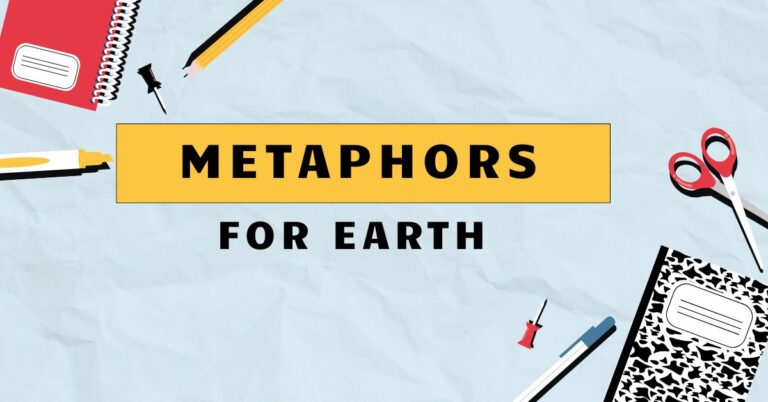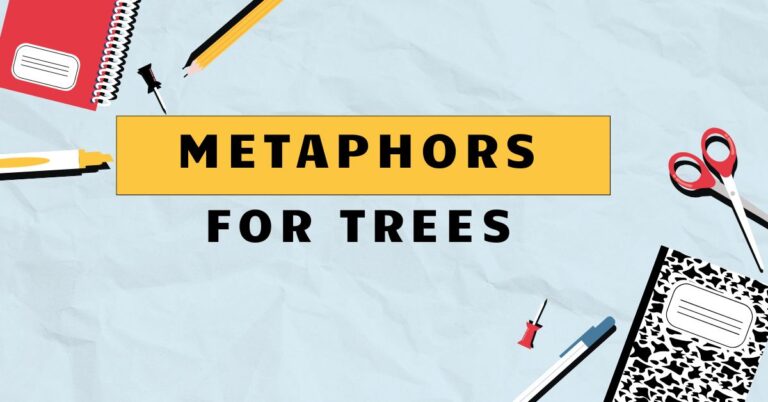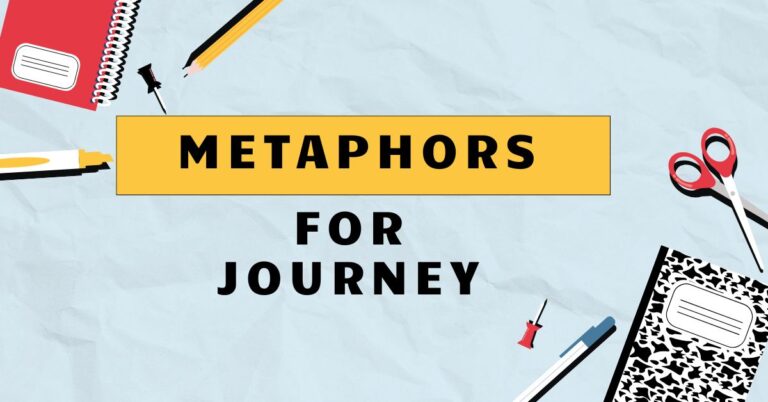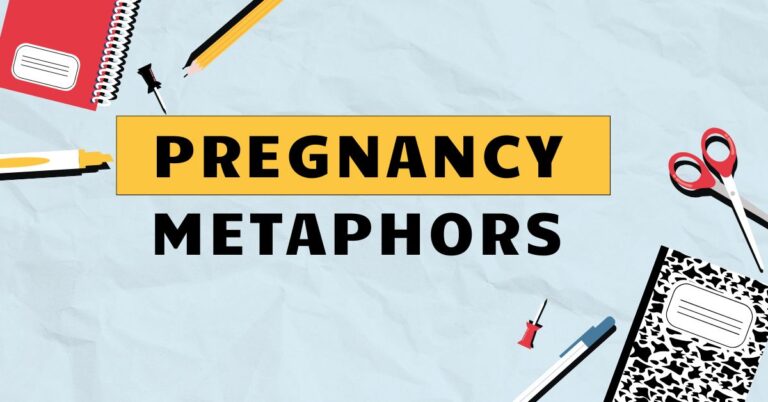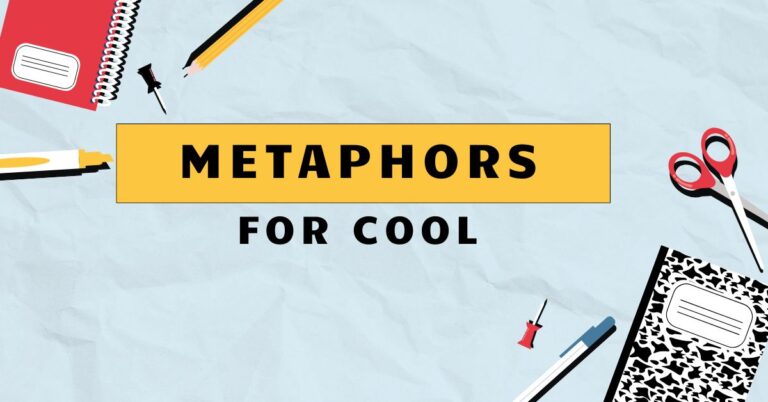30 Metaphors for Bad: Understanding Figurative Language
Metaphors are powerful tools that enrich our language, allowing us to express complex ideas and emotions in vivid and relatable ways. When it comes to describing something negative or undesirable, metaphors can be particularly effective.
Understanding these metaphors not only enhances our comprehension of English but also improves our ability to communicate with nuance and impact. This article delves into the world of metaphors for “bad,” exploring their various forms, meanings, and usage, providing a comprehensive guide for learners of all levels.
This guide is designed for English language learners, writers, and anyone interested in expanding their understanding of figurative language. By exploring different categories of metaphors for “bad,” analyzing their structural elements, and practicing their usage, you’ll gain a deeper appreciation for the richness and versatility of the English language.
This article will provide you with the tools to recognize, interpret, and effectively use metaphors to convey negative concepts in your own writing and speech.
Table of Contents
- Introduction
- Definition of Metaphor
- Structural Breakdown of Metaphors
- Types and Categories of Metaphors for “Bad”
- Examples of Metaphors for “Bad”
- Usage Rules for Metaphors
- Common Mistakes When Using Metaphors
- Practice Exercises
- Advanced Topics in Metaphor Usage
- Frequently Asked Questions
- Conclusion
Definition of Metaphor
A metaphor is a figure of speech that directly compares two unrelated things without using “like” or “as.” It asserts that one thing is another, creating a connection between them to highlight a shared quality or characteristic. Unlike similes, which use explicit comparison words, metaphors imply the comparison, making them more impactful and evocative.
Metaphors are essential for adding depth, color, and emotional resonance to language. They allow us to understand abstract concepts by relating them to concrete experiences.
For instance, instead of simply saying “the situation is difficult,” we might say “the situation is a swamp,” immediately conveying a sense of being stuck, overwhelmed, and struggling to move forward.
Metaphors function by transferring qualities from one concept (the source domain) to another (the target domain). The effectiveness of a metaphor depends on the audience’s familiarity with the source domain and their ability to recognize the implied connection.
A well-chosen metaphor can be both insightful and memorable, leaving a lasting impression on the reader or listener.
Structural Breakdown of Metaphors
Understanding the structure of a metaphor involves identifying its key components: the tenor, the vehicle, and the ground. The tenor is the subject being described, the vehicle is the image or concept used to describe it, and the ground is the shared characteristic between the tenor and the vehicle.
For example, in the metaphor “His words were daggers,” the tenor is “his words,” the vehicle is “daggers,” and the ground is the quality of being sharp, painful, and capable of causing harm. By understanding these elements, we can analyze how metaphors work and appreciate their creative power.
Metaphors can also be categorized asdead metaphors,conventional metaphors, andcreative metaphors. Dead metaphors are so overused that they have lost their figurative meaning (e.g., “the leg of the table”).
Conventional metaphors are commonly used and easily understood (e.g., “time is money”). Creative metaphors are original and imaginative, offering fresh perspectives and insights (e.g., “the city is a symphony of chaos”).
Types and Categories of Metaphors for “Bad”
Metaphors for “bad” can be categorized based on the specific negative qualities they convey. Here are several common categories:
Decay and Deterioration
These metaphors describe something that is gradually declining, rotting, or losing its value or quality. They often evoke a sense of unpleasantness, neglect, and irreversible damage.
Darkness and Shadows
These metaphors associate negativity with the absence of light, suggesting hidden dangers, uncertainty, and moral corruption. They can create a sense of fear, mystery, and foreboding.
Disease and Illness
These metaphors compare negative situations or behaviors to diseases, implying that they are contagious, harmful, and require treatment or eradication. They can convey a sense of vulnerability, suffering, and societal contamination.
Obstacles and Burdens
These metaphors represent negative experiences as challenges, impediments, or heavy loads that hinder progress and cause distress. They evoke a sense of frustration, difficulty, and the need for perseverance.
Storms and Disasters
These metaphors liken negative events to natural calamities, emphasizing their suddenness, destructiveness, and overwhelming impact. They can convey a sense of chaos, loss, and the struggle for survival.
Bitterness and Sourness
These metaphors connect negativity with unpleasant tastes and sensations, suggesting resentment, disappointment, and a lack of sweetness or joy. They can evoke a sense of emotional discomfort and dissatisfaction.
Traps and Confinement
These metaphors portray negative situations as inescapable enclosures, limiting freedom and causing a sense of helplessness. They often express the feeling of being stuck, controlled, or unable to break free.
Fire and Destruction
These metaphors compare negative events or emotions to uncontrolled flames, highlighting their destructive potential and ability to consume everything in their path. They convey a sense of danger, devastation, and irreversible damage.
Examples of Metaphors for “Bad”
Below are examples of metaphors for “bad,” organized by category. Each table provides a range of examples to illustrate the diverse ways in which these metaphors can be used.
Decay and Deterioration Examples
This table provides examples of how decay and deterioration can be used metaphorically to describe negative situations or conditions. The examples illustrate the slow, progressive nature of decline and the resulting unpleasantness.
| Metaphor | Meaning |
|---|---|
| His integrity was rotting from the inside. | His moral principles were gradually being corrupted. |
| The project decayed due to lack of funding. | The project failed because it didn’t receive enough financial support. |
| Her dreams had withered over time. | Her aspirations had gradually faded and died. |
| The relationship had gone sour after years of neglect. | The relationship had deteriorated and become unpleasant. |
| The city was crumbling under the weight of corruption. | The city was declining due to widespread corruption. |
| His reputation was tarnished by the scandal. | His reputation was damaged and made less respectable. |
| The evidence was moldy and unreliable. | The evidence was old, tainted, and untrustworthy. |
| The old car was a rusting relic of the past. | The old car was deteriorating and becoming useless. |
| Their hopes were fading with each passing day. | Their hopes were gradually diminishing. |
| The system was collapsing under its own weight. | The system was failing due to its inherent weaknesses. |
| The agreement was stale and no longer relevant. | The agreement was outdated and ineffective. |
| Her spirit was eroding from constant criticism. | Her confidence and enthusiasm were being gradually destroyed. |
| The foundation of their marriage was cracked. | The stability of their marriage was compromised. |
| His skills had atrophied from lack of use. | His skills had weakened due to inactivity. |
| The organization was dilapidated and in need of repair. | The organization was in a state of disrepair and decline. |
| The truth was buried under layers of lies. | The truth was hidden and obscured by deceit. |
| Their friendship had degenerated into animosity. | Their friendship had deteriorated and become hostile. |
| The morale of the team was sagging after the defeat. | The team’s morale was low and declining. |
| The project was languishing due to neglect. | The project was failing to progress due to lack of attention. |
| His health was declining rapidly. | His health was getting worse quickly. |
| The software was buggy and unreliable. | The software had many errors and was not dependable. |
| The food was spoiled and inedible. | The food had gone bad and could not be eaten. |
| The information was outdated and inaccurate. | The information was old and no longer correct. |
| The technology was obsolete and inefficient. | The technology was outdated and no longer effective. |
| The system was flawed and prone to errors. | The system had inherent weaknesses and often failed. |
Darkness and Shadows Examples
This table illustrates how metaphors of darkness and shadows can be used to represent negative aspects such as ignorance, fear, and moral corruption. The examples emphasize the hidden and ominous nature of these negative elements.
| Metaphor | Meaning |
|---|---|
| A shadow of doubt lingered in her mind. | She still had some uncertainty or suspicion. |
| His past was shrouded in darkness. | His past was mysterious and possibly sinister. |
| The project was operating in the shadows. | The project was being conducted secretly and possibly illicitly. |
| Dark secrets were buried deep within the organization. | The organization was hiding scandalous and potentially harmful information. |
| A cloud of suspicion hung over him. | He was suspected of wrongdoing. |
| The future looked bleak after the disaster. | The future seemed hopeless and unpromising. |
| He was lost in a fog of confusion. | He was extremely confused and disoriented. |
| The truth was obscured by a veil of lies. | The truth was hidden by deliberate falsehoods. |
| A dark cloud loomed over their relationship. | Their relationship was threatened by impending problems. |
| The city was plunged into darkness during the blackout. | The city was without light due to a power outage. |
| He was a shadowy figure in the underworld. | He was a mysterious and possibly dangerous person involved in criminal activities. |
| Her hopes were dimming with each setback. | Her hopes were gradually fading. |
| The situation was murky and unclear. | The situation was confusing and difficult to understand. |
| He was walking a dark path. | He was making morally questionable choices. |
| The scandal cast a long shadow over his career. | The scandal negatively impacted his career for a long time. |
| They were navigating through a maze of uncertainty. | They were trying to find their way through a complex and confusing situation. |
| His conscience was clouded by guilt. | His sense of right and wrong was obscured by feelings of guilt. |
| The project was enveloped in secrecy. | The project was being conducted in strict confidentiality. |
| He was blinded by ignorance. | He lacked knowledge and understanding. |
| The economy was in a slump. | The economy was experiencing a period of decline. |
| The future was uncertain and unclear. | The prospects for the future were unknown and unclear. |
| The plan was hazy and ill-defined. | The plan was vague and not clearly thought out. |
| His motives were obscure and difficult to discern. | His reasons for acting were unclear and hard to understand. |
| The situation was a black hole of despair. | The situation was a source of deep and overwhelming sadness. |
| The news cast a pall over the celebration. | The news dampened the mood of the celebration. |
Disease and Illness Examples
This table provides examples of metaphors that use disease and illness to describe negative situations, behaviors, or emotions. These metaphors emphasize the harmful and pervasive nature of the negative elements.
| Metaphor | Meaning |
|---|---|
| Corruption was a cancer spreading through the government. | Corruption was growing and destroying the government from within. |
| His anger was a virus infecting everyone around him. | His anger was spreading and negatively affecting those nearby. |
| The company was sick with mismanagement. | The company was suffering from poor leadership and administration. |
| Racism is a disease that plagues society. | Racism is a harmful and widespread problem in society. |
| Their relationship was toxic. | Their relationship was harmful and destructive. |
| The project was plagued by delays. | The project was consistently affected by problems causing delays. |
| He was paralyzed by fear. | He was unable to act because of his fear. |
| The economy was ailing. | The economy was in a state of decline. |
| Her mind was poisoned by jealousy. | Her thoughts were negatively influenced by jealousy. |
| The situation was a headache. | The situation was causing problems and stress. |
| He was addicted to power. | He had a strong and unhealthy desire for power. |
| The community was infected with fear. | Fear was spreading throughout the community. |
| His judgment was impaired by alcohol. | His ability to make sound decisions was weakened by alcohol. |
| The system was diseased and in need of reform. | The system was corrupt and required significant changes. |
| Their relationship was on life support. | Their relationship was failing and required extraordinary effort to sustain. |
| He was a victim of circumstance. | He was negatively affected by events beyond his control. |
| The project was terminal and could not be saved. | The project was destined to fail and could not be salvaged. |
| His spirit was broken by the tragedy. | His emotional well-being was severely damaged by the tragic event. |
| The organization was suffering from growing pains. | The organization was experiencing difficulties associated with rapid expansion. |
| His ideas were rejected by the committee. | His ideas were not accepted by the committee. |
| The market was volatile and unpredictable. | The market was unstable and subject to sudden changes. |
| The company was hemorrhaging money. | The company was losing money rapidly. |
| The policy was a band-aid solution. | The policy was a temporary fix that did not address the underlying problem. |
| The issue was a sore point between them. | The issue was a sensitive and contentious topic. |
| His reputation was tainted by the scandal. | His reputation was damaged by the scandal. |
Obstacles and Burdens Examples
This table illustrates how metaphors involving obstacles and burdens can be used to represent negative challenges, difficulties, and responsibilities. These metaphors emphasize the effort and strain associated with overcoming these negative elements.
| Metaphor | Meaning |
|---|---|
| He was carrying the weight of the world on his shoulders. | He felt responsible for and burdened by the problems of the world. |
| The project was a mountain to climb. | The project was extremely difficult to complete. |
| She was facing an uphill battle. | She was facing a difficult and challenging situation. |
| His career was a minefield of potential problems. | His career was full of hidden dangers and risks. |
| The task was a burden too heavy to bear. | The task was too difficult and overwhelming to handle. |
| He was trapped in a vicious cycle. | He was caught in a repeating pattern of negative events. |
| The negotiations were a dead end. | The negotiations had reached a point where no further progress was possible. |
| His efforts were met with a wall of resistance. | His efforts were strongly opposed. |
| She was swimming against the tide. | She was struggling against popular opinion or prevailing circumstances. |
| The situation was a quagmire. | The situation was complex, difficult, and likely to get worse. |
| He was walking on thin ice. | He was in a precarious situation. |
| The project was bogged down in bureaucracy. | The project was delayed and hindered by excessive regulations and paperwork. |
| She had to jump through hoops to get the job done. | She had to overcome many unnecessary obstacles to complete the task. |
| His path was strewn with obstacles. | He faced many difficulties and challenges. |
| The decision was a double-edged sword. | The decision had both positive and negative consequences. |
| He was carrying a torch for her. | He was still in love with her despite her lack of reciprocation. |
| The problem was a thorn in his side. | The problem was a constant source of annoyance and irritation. |
| He was struggling to keep his head above water. | He was barely managing to survive or stay afloat. |
| The situation was a slippery slope. | The situation was likely to lead to increasingly negative consequences. |
| The road ahead was uncertain. | The future was unclear and unpredictable. |
| The task was a long shot. | The task had a low probability of success. |
| The project was a white elephant. | The project was expensive and useless. |
| The problem was a can of worms. | The problem was complex and likely to cause further issues. |
| He was fighting a losing battle. | He was engaged in a struggle he was unlikely to win. |
| The situation was a catch-22. | The situation was a paradoxical problem with no easy solution. |
Storms and Disasters Examples
This table includes metaphors related to storms and disasters, which are used to describe sudden, destructive, and overwhelming negative events or situations. These metaphors emphasize the chaos and loss associated with these events.
| Metaphor | Meaning |
|---|---|
| The company was weathering a storm. | The company was facing a difficult period. |
| The scandal caused a tsunami of public outrage. | The scandal resulted in a massive wave of anger from the public. |
| His life was a train wreck. | His life was chaotic and disastrous. |
| The market crashed like a house of cards. | The market collapsed suddenly and completely. |
| The news hit them like a bomb. | The news was shocking and devastating. |
| Their relationship was a disaster waiting to happen. | Their relationship was likely to fail. |
| The project was a complete meltdown. | The project failed spectacularly. |
| His world was turned upside down by the earthquake. | His life was drastically changed by the sudden and disruptive event. |
| The economy was in a freefall. | The economy was declining rapidly. |
| The company was sinking like the Titanic. | The company was failing and beyond rescue. |
| His dreams were washed away by the flood. | His aspirations were destroyed by the overwhelming event. |
| The negotiations were a battlefield. | The negotiations were intense and contentious. |
| The company was in the eye of the storm. | The company was at the center of a turbulent situation. |
| His reputation was in tatters after the scandal. | His reputation was severely damaged. |
| The situation was a powder keg waiting to explode. | The situation was highly volatile and likely to erupt into conflict. |
| The project was a runaway train. | The project was out of control and heading for disaster. |
| His career was a roller coaster. | His career was marked by extreme ups and downs. |
| The news was a rude awakening. | The news was a shocking and unpleasant surprise. |
| The event was a perfect storm of unfortunate circumstances. | The event was the result of a rare combination of negative factors. |
| The company was facing a hurricane of financial problems. | The company was experiencing a severe and overwhelming financial crisis. |
| The incident was a wake-up call. | The incident served as a warning to change course. |
| His life was a house of cards, ready to collapse at any moment. | His life was unstable and vulnerable to sudden failure. |
| The scandal was an atomic bomb, destroying everything in its path. | The scandal was extremely destructive and caused widespread damage. |
| The collapse of the deal was a catastrophe for the company. | The failure of the deal was a major disaster for the company. |
Bitterness and Sourness Examples
This table includes metaphors that use the concepts of bitterness and sourness to describe negative emotions, experiences, or situations. These metaphors emphasize the unpleasant and distasteful nature of these negative elements.
| Metaphor | Meaning |
|---|---|
| His words were bitter. | His words were full of resentment and negativity. |
| She had a sour attitude. | She had a negative and unpleasant demeanor. |
| The experience left a bad taste in her mouth. | The experience was unpleasant and left her with negative feelings. |
| His disappointment was palpable. | His disappointment was obvious and intense. |
| The situation was unsavory. | The situation was unpleasant and morally questionable. |
| He felt a pang of regret. | He experienced a sudden and sharp feeling of remorse. |
| Her heart was filled with gall. | She was feeling bitter and resentful. |
| The news was a bitter pill to swallow. | The news was unpleasant but had to be accepted. |
| He was stewing in his own bile. | He was dwelling on his negative emotions and resentment. |
| The memory was acrid. | The memory was unpleasant and left a lingering negative feeling. |
| His humor was cynical. | His humor was pessimistic and distrustful. |
| She was disillusioned with the political system. | She had lost her faith in the political system. |
| The relationship had gone stale. | The relationship had become boring and unfulfilling. |
| He was jaded by his experiences. | He had become cynical and weary from his past experiences. |
| The situation was distasteful. | The situation was unpleasant and offensive. |
| His attitude was resentful. | His attitude was characterized by bitterness and indignation. |
| She felt a wave of sadness. | She experienced a sudden and intense feeling of sadness. |
| The outcome was a disappointment. | The result was not as good as expected. |
| His words were laced with sarcasm. | His words were meant to mock or convey contempt. |
| The deal turned sour after the new terms were introduced. | The deal became unpleasant and unfavorable after the new conditions were added. |
| His sense of humor was dry and often misunderstood. | His jokes were understated and sometimes not appreciated. |
| The failure of the project left a lingering sense of frustration. | The project’s failure caused a persistent feeling of disappointment. |
| The atmosphere was tense and uncomfortable. | The environment was strained and uneasy. |
| His response was sharp and critical. | His reaction was harsh and disapproving. |
Traps and Confinement Examples
This table contains metaphors related to traps and confinement, used to describe situations that restrict freedom, limit options, or create a sense of being stuck. These metaphors highlight the feeling of being controlled or unable to escape.
| Metaphor | Meaning |
|---|---|
| He was trapped in a dead-end job. | He was in a job with no opportunities for advancement. |
| She felt like a caged bird. | She felt restricted and unable to express herself freely. |
| He was caught in a web of lies. | He was entangled in a complex and deceptive situation. |
| They were stuck in a rut. | They were in a monotonous and unfulfilling routine. |
| She was in a prison of her own making. | She was confined by her own choices and limitations. |
| He was backed into a corner. | He was in a situation with no easy escape. |
| They were walking on a tightrope. | They were in a precarious situation requiring careful balance. |
| She felt like she was in a straitjacket. | She felt restricted and unable to move or act freely. |
| He was stuck between a rock and a hard place. | He was faced with two equally undesirable options. |
| They were in a maze of regulations. | They were confused and disoriented by a complex set of rules. |
| She felt like she was in a box. | She felt confined and limited in her options. |
| He was caught in a trap. | He was in a situation from which it was difficult to escape. |
| They were living in a bubble. | They were isolated from the realities of the outside world. |
| She felt like she was on a leash. | She felt controlled and restricted by someone else. |
| He was confined to a gilded cage. | He was living in luxury but lacked true freedom. |
| They were in a vicious cycle of poverty. | They were trapped in a repeating pattern of poverty and hardship. |
| She felt like she was drowning in red tape. | She felt overwhelmed by excessive bureaucracy. |
| He was stuck in a quicksand of debt. | He was increasingly trapped by his financial obligations. |
| They were living under a cloud of fear. | They were constantly afraid and anxious. |
| The project was shackled by bureaucracy. | The project was restricted and slowed down by excessive regulations. |
| He was handcuffed by his past mistakes. | He was limited and hindered by his previous errors. |
| She felt hemmed in by her family’s expectations. | She felt restricted and constrained by her family’s demands. |
| The company was cornered by its competitors. | The company was in a difficult position with limited options due to its rivals. |
| He was imprisoned by his own fears and insecurities. | He was confined and restricted by his personal anxieties and self-doubt. |
Fire and Destruction Examples
This table provides examples of metaphors that use the concepts of fire and destruction to describe negative events, emotions, or situations. These metaphors emphasize the intensity, destructiveness, and irreversible damage caused by these negative elements.
| Metaphor | Meaning |
|---|---|
| His anger was a raging fire. | His anger was intense and uncontrollable. |
| The scandal burned his reputation. | The scandal severely damaged his reputation. |
| Their relationship exploded. | Their relationship ended suddenly and violently. |
| The project crashed and burned. | The project failed spectacularly. |
| His dreams went up in smoke. | His aspirations were destroyed and came to nothing. |
| The company was in flames. | The company was in a state of crisis. |
| His words were like daggers. | His words were sharp and hurtful. |
| The situation was a powder keg. | The situation was volatile and likely to explode. |
| His career was destroyed by the scandal. | His career was ruined by the damaging event. |
| The negotiations fell apart. | The negotiations failed to reach an agreement. |
| His hopes were shattered. | His aspirations were completely destroyed. |
| The plan was a disaster. | The plan failed completely and caused significant problems. |
| His trust was broken. | His faith in someone was destroyed. |
| The agreement collapsed. | The agreement failed and fell apart. |
| His world was falling apart. | His life was disintegrating and becoming chaotic. |
| The scandal erupted. | The scandal suddenly became public and caused a crisis. |
| His anger was simmering beneath the surface. | His anger was building up and about to explode. |
| The market plunged. | The market declined sharply and rapidly. |
| The accusations incinerated his reputation. | The allegations completely destroyed his public image. |
| His career imploded after the scandal. | His professional life collapsed inward following the damaging event. |
| The project was a fiery failure. | The project failed spectacularly and intensely. |
| The relationship disintegrated under the pressure. | The bond fell apart completely due to the strain. |
| The deal evaporated at the last minute. | The agreement vanished unexpectedly just before completion. |
Usage Rules for Metaphors
Using metaphors effectively requires attention to detail and a good understanding of your audience. Here are some essential usage rules to keep in mind:
- Ensure Relevance: The metaphor should be relevant to the subject and enhance understanding, not confuse it.
- Avoid Clichés: Opt for fresh, original metaphors rather than overused ones.
- Maintain Consistency: Stick to the same metaphorical theme throughout your writing to avoid mixed metaphors.
- Know Your Audience: Choose metaphors that will resonate with your audience’s knowledge and experience.
- Consider Tone: Ensure the metaphor aligns with the overall tone and purpose of your message.
- Be Clear: The meaning of the metaphor should be clear from the context.
- Use Sparingly: Overusing metaphors can make your writing seem contrived and confusing.
Common Mistakes When Using Metaphors
Even experienced writers can make mistakes when using metaphors. Here are some common pitfalls to avoid:
- Mixed Metaphors: Combining metaphors that create illogical or contradictory images. For example, “We need to nip it in the bud before it snowballs.” (Mixing plant growth and snowballing)
- Clichés: Using overused metaphors that have lost their impact. For example, “He was as cool as a cucumber.”
- Inappropriate Tone: Using metaphors that are inconsistent with the overall tone of the writing.
- Lack of Clarity: Using metaphors that are too obscure or confusing for the audience to understand.
- Overuse: Using too many metaphors, which can make the writing feel forced and unnatural.
Practice Exercises
Advanced Topics in Metaphor Usage
For those looking to deepen their understanding of metaphors, here are some advanced topics to explore:
- Extended Metaphors: A metaphor that is developed over several lines or paragraphs, creating a more complex and sustained comparison.
- Conceptual Metaphors: Underlying cognitive structures that shape our understanding of abstract concepts. For example, “argument is war” (e.g., “He attacked my argument”).
- Metaphorical Reasoning: Using metaphors to solve problems and generate new insights by transferring knowledge from one domain to another.
- Cross-Cultural Metaphors: Understanding how metaphors vary across cultures and languages, and how to avoid cultural misunderstandings.
Frequently Asked Questions
Conclusion
Metaphors are indispensable tools for enriching language and conveying complex ideas in memorable ways. By understanding the different categories of metaphors for “bad,” practicing their usage, and avoiding common mistakes, you can enhance your communication skills and add depth to your writing and speech.
Whether you’re an English language learner, a writer, or simply someone who appreciates the power of language, mastering metaphors will open new doors to creative expression and effective communication.

